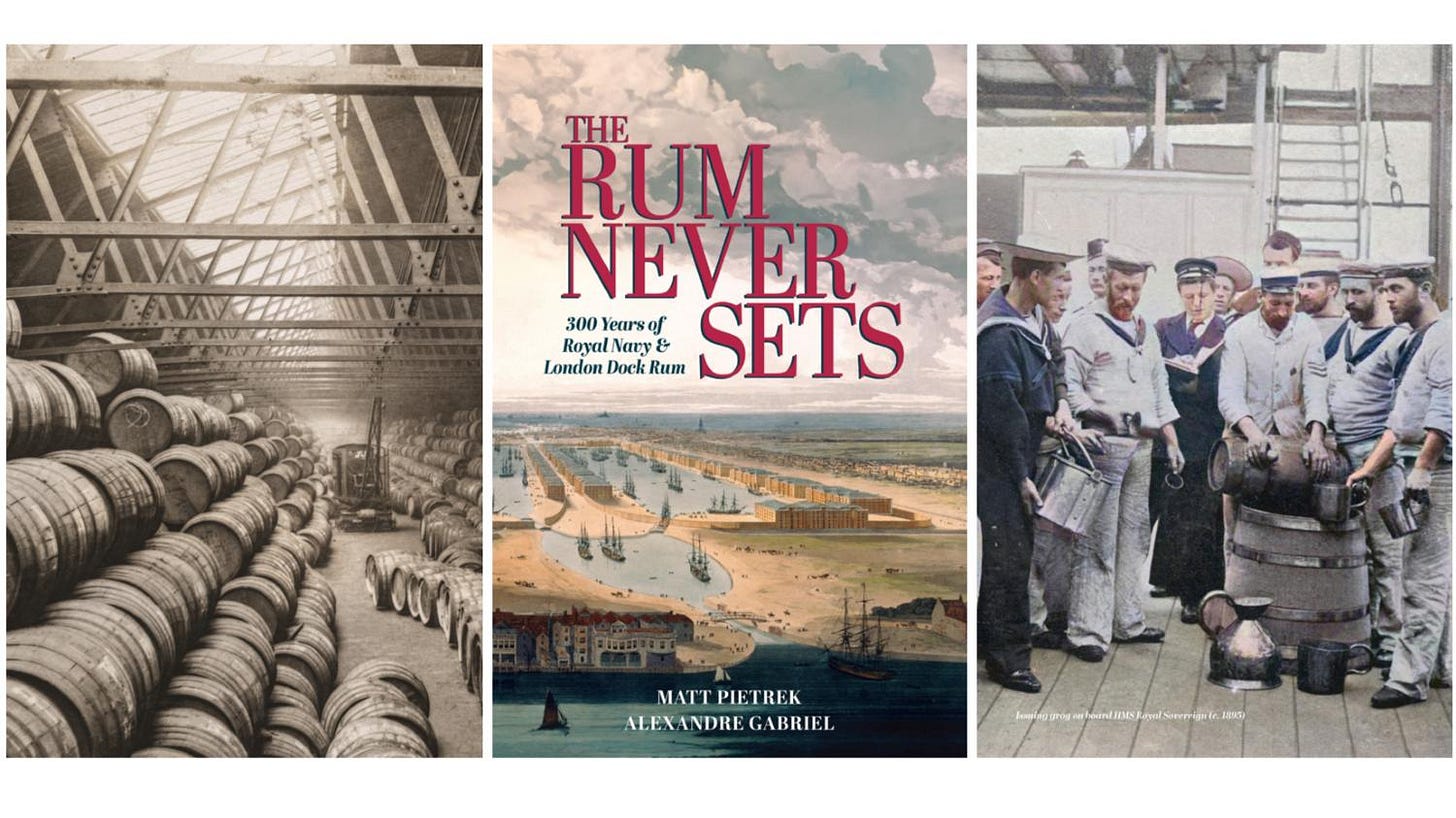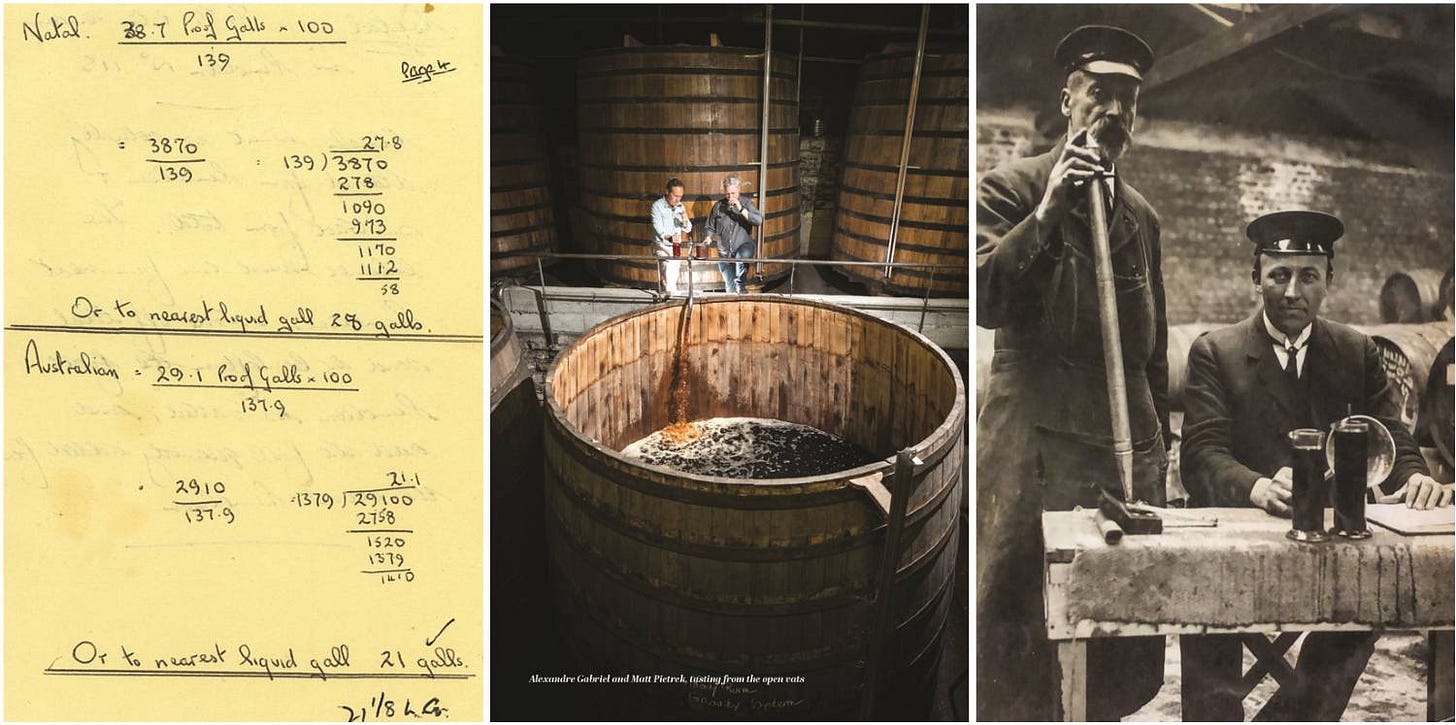The Rum Never Sets - The New Book on Royal Navy and London Dock Rum
Writing a book is a lonely pursuit. It’s not just the many months (or years) to put words down, but also the interminable wait for your words and images to pass through the production process and appear in physical form. Among the foremost highlights of an author’s life is announcing their creation to the world.
Today is such a day.
I’m excited to announce my latest book, The Rum Never Sets: 300 Years of Royal Navy and London Dock Rum, co-authored by Alexandre Gabriel of Planteray Rum. It was Alexandre who approached me with an idea for this book in late 2018 while I was working on what would later become Minimalist Tiki. I couldn’t have imagined at the time how much this project would influence my subsequent career, nor that we’d be the publisher.
While most books about rum history rightfully focus on who made the rum and where it was produced, e.g., the colonial Caribbean, far less attention is given to what happened once the rum arrived in Europe. Numerous European countries, including the UK and France, imported enormous quantities of rum and sugar from their Caribbean colonies. Countless millions of liters of rum flowed from the Caribbean to port cities like London, Liverpool, Marseille, and Bordeaux, where it was aged and bottled for sale.
The Rum Never Sets is a two-part book focusing on the UK’s angle of this story. I authored Part One, while Alexandre Gabriel wrote Part Two.
Part One: History of the West India Docks and Royal Navy Rum
Among the most transformative events in London’s history was the introduction of inland dockyards along the River Thames. The West India Dock was built in 1802 to maximize the incoming flow of colonial goods, such as sugar and rum, as well as the outgoing flow of goods bound for the colonies. More docks like the East India Docks soon followed, changing London’s landscape forever. By the 1820s, the West India Docks’ rum storage facilities held so much rum that it continues to stagger the imagination two centuries later.
A massive amount of rum arriving at the West India Docks — millions of gallons annually —was purchased by the Royal Navy. Indeed, the Royal Navy was the British Caribbean’s largest customer for 150 years and arguably kept the British Caribbean’s rum industry afloat during decades of financial turmoil. What the Royal Navy did with that rum, and how sailors consumed it, is shrouded in mystery and misconceptions.
Among the biggest mysteries is the exact recipe for the navy’s rum, which has never been revealed till now. Chapters Six and Seven of The Rum Never Sets contain the Royal Navy’s 1960s-era recipe, including source distilleries, specific marks, and exact quantities of each. This information was preserved via the handwritten notes of a gentleman who blended it for the Royal Navy.
Part Two: The Seven Pillars of Royal Navy Rum
In Part Two, Alexandre Gabriel examines Part One’s findings and outlines seven key technical factors (pillars) of Royal Navy rum over several centuries. The pillars combined cover many aspects of the rum’s sourcing, aging, and blending.
In addition to technical descriptions and analytical data for each pillar, Gabriel also demonstrates how they influenced his team’s work in creating and blending a modern rum based on each pillar, i.e., Planteray’s Mister Fogg Navy Rum.
Precursor
The precursor to the Rum Never Sets was Exploring 300 Years of Royal Navy Rum and Its Techniques, a limited-edition book published by Planteray and sold at trade events. In the year since that book’s publication, we (Wonk Press) added significant amounts of new material, reworked some of the original material, and added nearly 100 new images and a full index to make The Rum Never Sets a full-fledged Wonk Press book.
Below you’ll find the Table of Contents for The Rum Never Sets, which provides additional detail about what’s covered. I’ll have more to say about the book’s origin in future stories here.
Part One — History of the West India Docks and Royal Navy Rum (Matt Pietrek)
BRITAIN’S RUM HISTORY IN OVERVIEW
Key Themes of British Dock Rum History
The End of the Golden Era of British Dock Rum
The Road Ahead
LONDON’S WEST INDIA DOCKS & RUM QUAY
Advantages of the West India Docks
Rum Quay
Safety Precautions & Inspections
Fire on the Thames
The End of Rum Quay
WHAT WAS LONDON DOCK RUM?
Rum Sources
Transport and Aging
Rum Styles & Merchant Marks
Plummer & Wedderburn – Mark or Style?
Commercial London Dock Rums
Commercial Navy Rums
LONDON’S RUM MERCHANTS
Plantation Owners & West India Docks Subscribers
Wine & Spirits Specialists
The Great Consolidation – United Rum Merchants
SOURCING BRITAIN’S MILITARY RUM
The Age of Contract Bid Notices
Rums of the Navy – 1700s
Rums of the Navy – 1800s
Rums of the Navy – 1900s
Known Royal Navy Rum Blends Over the Years
Navy Rum Suppliers
ED&F Man
Rum for the Army
ROYAL NAVY RUM PRODUCTION
HM Victualling Yards
Rum Arrivals
The Royal Navy’s Vats
Issuing Containers
Rum Losses
Navy Rum Quality
End of an Era
Understanding Alcoholic Strength & Proof
THE LAST NAVY RUM VATTER
An Interview with Arthur Roberts
DRINKING THE ROYAL NAVY’S RUM
A Brief History of Navy Rum Consumption
The British Navy’s Version of Its Rum History
The Daily Ration Ceremony
The Battle For Sobriety – Grog Formulation Changes
Temperance & the Royal Navy
Black Tot – The End of Navy Rum
Navy Rum Goes Commercial
Navy Neaters






Big mazel to you and Alexandre!
Looks great, will is be able to buy in the UK?